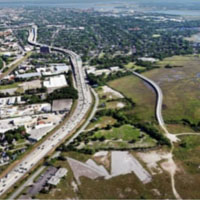


Alexis Stephens of the on-line magazine Next City featured a recent interview with Stan Humphries, chief economist of Zillow, about the current climate of homeownership and rental housing in the US. In that interview Mr. Humphries indicated that the homeownership rate has been consistent, at slightly less than two-thirds, since the 1960s. For the third that rent, he states, “…it is probably a rational strategy given our income profiles, our ages, how mobile we are, etc.”
Mr. Humphries goes on, however, “…I’m deeply concerned that renting…is no longer affordable….[R]ight now, according to our numbers, renting has never been less affordable in this country….” The shift in the 80s and 90s toward private provision of housing, stimulated by low-income tax credits and Section 8 subsidies has not filled the need.
Mr. Humphries’ concern resonates among those who are advocating for more affordable housing in Charleston. The downtown area is especially susceptible to high rental rates due to the pressures associated with the rapid growth and real estate development in the region. Michelle Mapp, Executive Director of the South Carolina Community Loan Fund, was very eloquent in her recent presentation during the forum A Vision for Charleston: Priorities for the Next Mayoral Administration. She introduced the audience to “5-year old Jordan” who “lives in the Silver Hill Neighborhood in Charleston’s Neck – a neighborhood scattered with dilapidated houses, no easy access to a full service grocery store, no daycare or health center, and no local, community-based businesses in which her family can buy goods and services.
“… Ask yourselves, ‘Can we be content knowing that Charleston took home Travel & Leisure‘s top honor for favorite North American City and #2 City in the World…, yet 1 in 4 of our children are living in poverty? How is it that the very workers that are the foundation of our tourism-based economy, like Jordan’s Mom and Dad, far too often cannot find an affordable place to live in our city and we oppose, often through our silence, every attempt to provide them with safe, decent, and affordable housing options?’ At its essence, these are economic development questions.
“The question is do we have the political will to counter NIMBY [Not In My Backyard], enact innovative planning and zoning policies, and advocate for both public and private investment to support the development of affordable housing at a magnitude and scale to meet all of our community’s needs? This may not be the popular stance, but it is the right stance.”
Not only is it the “right” stance in terms of overall community values. As Mr. Humphries stated, regarding a certain complacency among homeowners who are “…lulled into a false sense of confidence, thinking, ‘That’s a problem for some other group. Not me.’ It’s a problem for everyone, because today’s renters are tomorrow’s buyers.”
The Urban Land Institute (ULI) in its January/February 2015 issue of Urban Land lays out several strategies for creating the conditions for private development of affordable housing in its overview article recapping a recent meeting of its Affordable/Workforce Housing Council. Some strategies brought up in the discussion included: realignment of state low-income housing tax credits to reflect more appropriate housing configurations, smaller unit sizes in urban areas, reducing parking requirements to better reflect the resident requirements/needs, creating more efficient unit layouts, property tax exemptions, and partnering with organizations who own land that can be developed, such as churches, school districts, and housing authorities.
Another article in this same issue features some excellent strategies, as offered by San Francisco architect David Baker, for creating community in and around affordable housing development. It is worth a read. Take some notes since many of these ideas can translate into market-rate projects as well.
If you are looking for a way to explore this idea further, consider looking into the How Housing Matters website, a project of the Urban Land Institute made possible through the John D. and Catherine T. MacArthur Foundation.
Affordable housing is a huge issue so expect us to do a deeper dive into this topic in the near future. Building and keeping housing affordable in urban areas is a real challenge but it plays a key role in fostering a city’s livability. Support affordable workforce housing, and you will find your community has better teachers, law enforcement officers, fire fighters, and a whole range of people and their families who contribute in ways that positively impact us all.